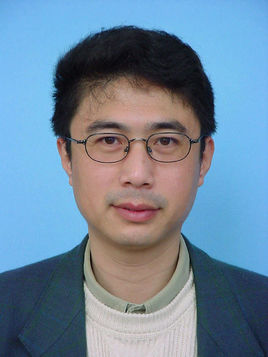Prof. Hui Gu [Shanghai University, China]
Title: Microstructure study on the intergrowth bismuth layer-structured ferroelectrics Bi7Ti4NbO21
Time: 2:00 - 3:00 PM, Wednesday, November 4, 2015
Place: Conference Room 201, HPSTAR (Shanghai)
Host: Dr. Bin Chen
Abstract:
Bismuth-layer structured ferroelectrics (BLSF) are formulated as [Bi2O2][Am-1BmO3m+1] to consist of m perovskite blocks between [Bi2O2]2+ layers. Intergrowth BLSF with two m alternating along c-axis enables tailoring of ferroelectric properties. A series of intergrowth Bi7Ti4NbO21 (m=2+3) were reactive-sintered from Bi3TiNbO9 and Bi4Ti3O12 parent phases, which exhibit correlated characters in structures, defects and microstructures.
Various types of stacking-faults were formed with extra Bi3TiNbO9 (m=3) or Bi4Ti3O12 (m=2) layers, as observed by HREM and STEM/HADF. Their size and density decrease with the increase of sintering temperature. Some single faults were evenly spaced to form locally new intergrowth ordering as Bi10Ti5Nb2O30 (m=2+3+2) or Bi11Ti7NbO33 (m=3+2+3). Intergrowth and parent structures could even been found within a same grain to form a so-called “co-growth” structure, either at low or high sintering temperatures but with opposite growth natures. The occurrence of various stacking-faults in intergrowth and of two types of co-growth can be interpreted by a unified solution-precipitation process, which is guided by the trend of grain growth that is commonly dictated by the sintering temperature. On the other hand, these layered defects were also the outcomes of an incomplete reaction of the two parent phases in formation of the ideal intergrowth structure.
In this regard, stacking faults were formed from layered remnants survived through an incomplete dissolution, hence finally imbedded into the intergrowth as layered faults. In meanwhile, the co-growths were formed by confined dissolution of local melts between non-dissolved phases. These lead to a unified mechanism in a structural re-organization picture: the original layered units in the parent phases construct the intergrowth frame-structure as an independent phase, and form in parallel various stacking faults as layered defects associated with the newly created phase, and form as well the co-growth structures as an intermediate stage between the parent and intergrowth phases.
Furthermore, an intergranular phase of metallic Bi was also detected. We have discovered that this unexpected metal was created from an in situ reaction for the [Bi2O2] interlayer structure within the intergrowth phase: by over-oxidizing the interlayer and transforming it into a rutile arrangement, the excessive Bi cations were reduced and subsequently driven out into the intergranular regions created between the anisotropic grains. In meanwhile, the interlayer structure itself expands into a neighboring perovskite layer to establish a symmetric configuration that is more stable than the initially uneven configuration.
Biography of the Speaker:
 Prof. Hui Gu works at Shanghai University as a professor in School of materials science and engineering and Department of Electronic Information. He was named as Distinguished Young Scholar from National Natural Science Foundation of China in 2005. He received his Ph.D. from Peking University, in 1989. His research mainly concerns on the microstructure evolution of inorganic materials using TEM.
Prof. Hui Gu works at Shanghai University as a professor in School of materials science and engineering and Department of Electronic Information. He was named as Distinguished Young Scholar from National Natural Science Foundation of China in 2005. He received his Ph.D. from Peking University, in 1989. His research mainly concerns on the microstructure evolution of inorganic materials using TEM.
Education experience
• 1979—1983 Peking University,Department of Physics,Bachelor
• 1983—1986 Peking University,Department of Physics,Master
• 1986—1989 Peking University,Department of Physics,Ph.D.
